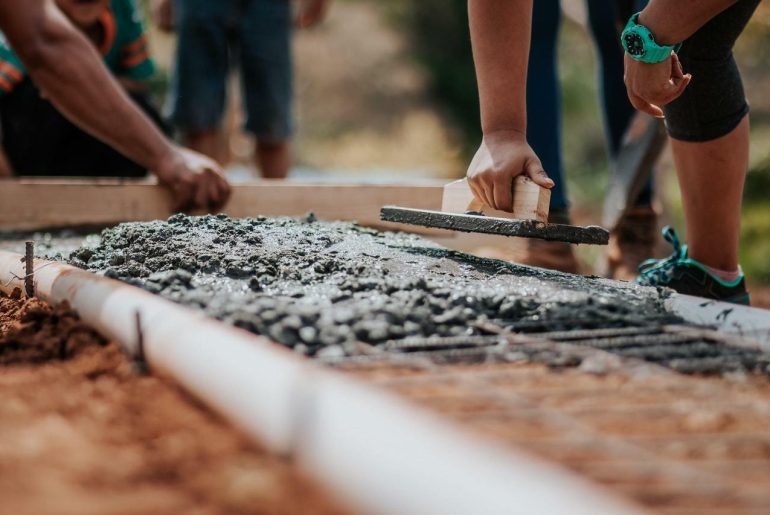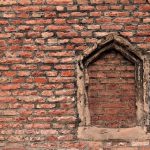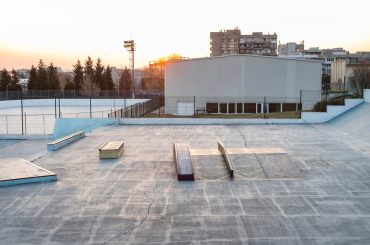Cement is a binder substance that sets, hardens, and sticks to other materials to bind them. It is a fine, soft, and powdery substance. It is a very important material in building construction. The raw materials that are mostly used in the making of cement include lime, silica, alumina, and iron oxide.

Although people tend to get confused with the terms cement and concrete, it must be known that cement is actually an ingredient of concrete. Concrete is a mixture that consists of aggregates and pastes. Before learning about “which cement is best for house construction”, let us first understand the types of cement available.
Cement, in general, is usually divided into two kinds:
Hydraulic Cement
Hydraulic cement is the type of cement that hardens when it comes in contact with water. It is composed of limestone, clay, and gypsum. This happens due to a chemical reaction between the anhydrous cement powder and water. This chemical reaction results in the creation of hydrates that are insoluble in water and are very durable. This type of cement hardens under water or when it is constantly exposed to wet weather. It retains its strength and hardness only below water. Due to this, hydraulic cement is suitable to work with during any weather conditions.

Non-Hydraulic Cement
Non-hydraulic cement is the type of cement that needs to be kept dry for it to attain strength. It is composed of lime, gypsum plaster, and oxychloride. It takes a long time to set and hence this cement is becoming redundant and obsolete.
Cement is most importantly used in the making of mortar in the construction industry. It is an ingredient in the production of concrete. A combination of cement and other aggregates gives birth to a strong building material.
Which cement is best for house construction?
If you are an architecture or an engineering student, or simply somebody who is curious to learn about the construction industry, the question “Which cement is best for house construction” must have definitely crossed your mind.
Selection of the best type of cement for the construction of a structure is of utmost importance for the making of durable structures. The choice of cement depends on various factors including cost and availability in the local market. It also depends on the purpose of use, the performance quality, and the condition of the environment in which the cement has to be used. Different types of cement are available in different areas with their own unique and specific characteristics.
In India, for the construction of a residential building, generally, two types of cement are widely used which are:
OPC or Ordinary Portland Cement
Limestone and clay minerals are heated in a kiln and ground. In that mixture, two to three percent of gypsum is added. This mixer is then mixed into a fine powder which forms OPC or Ordinary Portland Cement. This cement is available in three different grades that can be used for three different purposes. These three types are designated for different compressive strengths. The higher the grade of OPC, the more strength it provides. The grades are:
OPC 33 Grade
This grade of cement is mainly used for wall plastering, non-RCC structures, pathways, etc. It is rarely used nowadays, as its compressive strength is very low in comparison to other types of concrete available in the market. It is mostly used in the making of low-grade concrete such as below M20 Concrete grade.
OPC43 Grade
This grade of cement is mostly used in PCC and RCC work. It is mostly used for plastering, flooring, pathways, stone masonry, brick masonry, etc. It is used in areas where the grade of concrete is up to M30. This grade of concrete is also used in the finishing of structures, bridges, culverts, roads, etc.
OPC53 Grade
This grade of cement is used in RCC and pre-stressed concrete of higher grades. Instant plugging mortars, cement grouts, etc. It is used for fast-paced construction where the initial strength of the construction is to be achieved quickly. Since it is the grade with the highest compressive strength, the OPC53 grade is costlier in comparison to the OPC33 and OPC43 grades.
PPC or Portland Pozzolana Cement
This type of cement is made by a combination of pozzolanic materials. Pozzolanic materials may include volcanic ash, fly ash, calcined clay, etc. and these materials make about 15-35% of the total cement weight. The material pozzolana can be artificial or natural and has silica in it in a reactive form. This cement consists of pozzolanic materials in specific proportions and also consists of OPC clinker and gypsum.

Portland Pozzolana Cement is said to be a product of the future considering all the variety of purposes it can be used. Unlike OPC, PPC can be used in a hostile working environment. It can be used in the construction of marine structures, masonry mortars and plastering, and hydraulic structures. In today’s world, they are massively used in concrete works such as sewage pipes, dams, etc. PPC is cheaper in comparison to OPC and it also is more environmentally friendly as both industrial and natural wastes are used in the manufacturing of PPC. PPC also releases less heat in comparison to OPC during construction.
Conclusion
Cement, in general, is one of the fundamental elements for the creation of a strong infrastructure. The Indian cement industry has been growing at a rapid rate as India because of the flourishing real estate business, highly growing construction industry, and increased industrial activity. Both, Ordinary Portland Cement and Portland Pozzolana Cement are widely used in the construction industry. Although nowadays, PPC is being used as a substitute for OPC.
After going through this article, I am sure you have a slight idea that selecting a type of cement cannot depend on weighing the pros and cons between OPC and PPC cement. One can choose the best type of cement by going through the needs and requirements of the project and then picking out the type of cement that will best suit the construction method.






